Wednesday, 11th January 2023
National Geospatial Policy 2022
Context: On December 28, 2022, the central government notified the National Geospatial Policy 2022 for implementation with immediate effect.
What is the National Geospatial Policy?
- The National Geospatial Policy, 2022 is a citizen-centric policy that seeks to strengthen the geospatial sector to support national development, economic prosperity and a thriving information economy.
- It will replace the National Map Policy, 2005.
|
What is geospatial data? Geospatial data are descriptions of events or occurrences with a location on or near the surface of the earth.
|
Goal of the policy:
The National Geospatial Policy lists the following targets to be achieved before 2035.
Key points about the policy:
- National Geospatial Data Framework: The policy will develop a national geospatial data framework, and enable “easy availability" of data to businesses and the general public.
- Legal Framework: By 2025, the government will put in place a legal framework that “supports liberalization of the geospatial sector.
- Geospatial Data Promotion and Development Committee(‘GDPDC’): will be constituted for formulating and implementing guidelines, strategies, and programs for the promotion of activities related to the Geospatial sector.
- Geospatial Knowledge Infrastructure: The government will establish an Integrated Data and Information Framework, under which a Geospatial Knowledge Infrastructure (GKI) will be developed by 2030.
- National Digital Twin: It will also promote the use of National Digital Twin.
|
National Digital Twin It refers to an ecosystem of high-resolution data to promote connected digital twins among private businesses “with secure and interoperable data sharing." |
Significance:
- The policy will encourage open standards, open data and platforms.
- The policy is structured to contribute towards the democratisation of data — Survey of India (SoI) topographic data and other geospatial data produced using public funds wouldbe treated as common goods and made easily available.
- Liberalisation in the field has the potential to support the government’s ease of doing business policy.
- The private sector is expected to predominantly cater to geospatial/location data-related needs and requirements of citizens.
- It will also play a key role in the creation and maintenance of geospatial and mapping infrastructures.
Source: The Hindu, Livemint.
Govt's Role in Correcting Nutrient Imbalance
Context:
2022 saw global prices of fertilisers go through the roof in the run-up to and post Russia’s invasion of Ukraine on February 24. However, prices have since eased considerably.

Impact:
- The easing of global fertilizer prices has improved overall availability and reduced the Centre's fertilizer subsidy outgo.
- Augmented fertilizer availability, coupled with good soil moisture conditions, has helped boost area sown under rabi crops.
The Indian government can correct the worsening nutrient imbalance from over-application of urea and DAP by implementing the following strategies:
Promote balanced fertilization: The government can move away from product-specific subsidy and instead fix a per-kg Nutrient-based Subsidy (NBS) rate for each nutrient (N, P, K, and S), to promote balanced fertilization. This would encourage farmers to use complex fertilizers and single superphosphate (SSP) which have lower concentrations of N, P, K and S.
Encourage soil testing: By promoting soil testing and encouraging farmers to use fertilizers based on the specific nutrient requirements of their land, the government can reduce the over-application of urea and DAP.
Educate farmers: Through extension services, farmers can be educated on the benefits of balanced fertilization and the negative impact of over-application of urea and DAP.
Implement price controls: The government can implement price controls on fertilizers to ensure that farmers are not over-paying for products.
Check illegal diversion of the heavily-subsidized fertilizers: The Modi Government has made coating of urea with neem oil compulsory from 2015-16, to check illegal diversion of the heavily-subsidized fertilizers for non-agricultural uses, including by plywood, dye, cattle feed and synthetic milk makers.
Support micro-nutrient supplementation: The government can also support micro-nutrient supplementation, especially for small and marginal farmers who have limited access to balanced fertilizers.
Sources: Indian Express.
What are Flatovoltaics? - Edukemy Current Affairs
Context: India’s largest floating solar power project, spanning over 600 acres, is now fully operational at Ramagundam in Peddapalli district of Telangana.

What are Floatovoltaics?
Floatovoltaics, also known as floating solar, is a technology that involves installing solar panels on bodies of water, such as reservoirs and dams. This innovative approach to solar power generation has several advantages over traditional land-based solar farms.
Benefits of Floatovoltaics:
Utilizing unused space: By installing solar panels on bodies of water, floatovoltaics allows for the use of otherwise unused space to generate electricity.
Cooling effect: The water under the panels helps to cool them, increasing their efficiency.
Reduced evaporation: Shade provided by the floating panels reduces evaporation from the water surface, which can help preserve water supplies.
Preventing Algae growth: On some cases, floating solar panels help to prevent the growth of algae by reducing the amount of sunlight that reaches the water surface.
Reduced land use: Because floatovoltaics doesn't require land, it is a particularly attractive option for areas where land is scarce or expensive.
Significance for India:
Water scarcity: India is facing increasing water scarcity as population and agriculture demand continues to grow. Floatovoltaics can help to preserve water supplies by reducing evaporation.
Energy demand: India is also dealing with increasing energy demand as it continues to industrialize and urbanize. By taking advantage of unused space on bodies of water, floatovoltaics can help to meet that demand.
Space constraint: With large population and limited land availability, floatovoltaics is a great way to generate electricity as it utilizes otherwise unused space.
Sources: Economic Times.
Protecting Kids Online: Combatting Child Abuse
Context:
The internet has become an integral part of our lives, but it has also brought with it a new form of child exploitation - online child sexual abuse.
- In India, the number of reported cases of child sexual abuse has been on the rise, and the internet has made it easier for predators to groom and exploit children.
- The Indian government, along with various NGOs, needs to take urgent action to address this issue.

What needs to be done now?
Technology and social media: One of the main reasons for the increasing number of cases of online child sexual abuse is the widespread use of technology and social media. Children are spending more time online, making them vulnerable to groomers and predators who use the internet to lure them into dangerous situations. The government needs to work with social media companies to develop and implement better measures to monitor and prevent online abuse.
Education: Education is key to tackling online child sexual abuse. Children need to be taught about the dangers of the internet, and how to stay safe online. Parents and teachers also need to be educated about the signs of online grooming, so they can take appropriate action if they suspect a child is being targeted.
Stricter laws and enforcement: The Indian government needs to strengthen laws and regulations to combat online child sexual abuse. Laws need to be more robust to deal with the cross-border nature of online crimes. At the same time, the police and other agencies need to be better equipped to investigate and prosecute these cases.
Support for victims: It is important to provide support for victims of online child sexual abuse, so they can recover from their experiences. This includes providing counseling, therapy, and other forms of assistance. The government should also work with NGOs and other organizations to create support services for victims and their families.
Sources: Indian Express
MP HC Resolution: Rename 'Lower Courts' District Courts
Context:
The Madhya Pradesh High Court recently passed a verdict to call all lower courts as district courts not as ‘subordinate judiciary’. This move is seen as a step towards combating the problem of judicial feudalism in the state.

What is judicial feudalism?
Judicial feudalism is a term used to describe the dominance of a few powerful individuals over the judicial system. It leads to corruption, nepotism, and inefficiency in the administration of justice. This problem is prevalent in many parts of India, including Madhya Pradesh.
Combatting Judicial Feudalism:
Transparency and Accountability: By unifying the lower courts under the district court designation, the judiciary will become more transparent and accountable. This will reduce the influence of powerful individuals and promote impartiality in the judicial system.
Access to Justice: The unification of lower courts as district courts will lead to increased access to justice for citizens. This will be especially beneficial for residents of rural and remote areas, who often have limited access to legal services.
Improving Governance: The unification of lower courts as district courts will lead to improved judicial governance. This will ensure that the citizens receive justice in a timely manner and that the judicial system functions more effectively and efficiently.
Addressing the gap between the High court and lower courts: The unification of lower courts under the district court designation will address the gap between the High court and lower courts. This will lead to a more coordinated approach towards the administration of justice.
Need for:
The Constitution of India sets up a hierarchy of courts and places, but not of judges. Each judge has the same authority within their assigned area and no judge can tell another judge how to make decisions. The Supreme Court can make laws that apply to all courts in India, but it's still up to each individual court to decide how to apply the law. The Constitution makes sure that all judges are equal and respected, and that the judicial process is equal and fair, not one judge is above or below another.
Sources: Indian Express.
The stalemate between Telangana and AP
Context: More than eight years after the bifurcation of the erstwhile united Andhra Pradesh, division of assets and liabilities between the two States remain elusive as the States make their own interpretation of the provisions under the Andhra Pradesh Reorganisation Act 2014.
- Several bilateral meetings between the two States as well as those convened by the Union Home Ministry failed.
- The Andhra Pradesh government has now approached the Supreme Court seeking “just, reasonable and equitable apportionment” of assets and liabilities.
Now, what assets are to be divided?
- There are 91 institutions under Schedule IX and 142 institutions under Schedule X of the Act.
- The division of another 12 institutions not mentioned in the Act has also become contentious between the States.
- The issue involves 245 institutions with a total fixed asset value of ₹1.42 lakh crore.
AP government’s claims:
- The AP Government is firm on the implementation of the recommendations given by the expert committee headed by retired bureaucrat Sheela Bhide for bifurcation of 89 out of the 91 Schedule IX institutions.
What did the expert committee say?
- The committee has made recommendations with respect to the division of 89 out of the 91 Schedule IX institutions.
- Its recommendations on the division of assets that are not a part of the headquarter assets attracted criticism from the Telangana government.
- The division of several institutions which have huge land parcels in its possession have become the key bone of contention between the two States.
What is the stand of Telangana?
- The Telangana government has contended that the expert committee’s recommendations were against the interests of Telangana.
- According to its officials, there is a clear definition of division of headquarter assets in Section 53 of the Reorganisation Act.
The role of the Centre:
- Several meetings of the dispute resolution committee headed by the Union Home Secretary and comprising of the Chief Secretaries of the two States and those convened.
- The Act empowers the Union Government to intervene as and when needed.
- Hopefully, the Home Ministry takes steps to expeditiously and amicably settle the issues between the two States.
Source:The Hindu
Andhra Pradesh bifurcation: - Edukemy Current Affairs
Context: Andhra Pradesh government has approached the Supreme Court seeking “just, reasonable and equitable apportionment” of assets and liabilities with Telangana.
- Andhra Pradesh was formally bifurcated by an Act of Parliament on June 2, 2014. Post the split, Telangana came into existence.
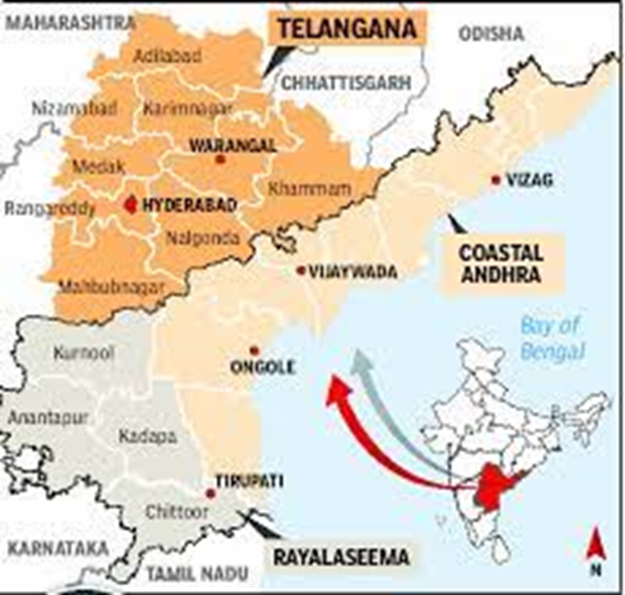
Key points:
- The demand for the formation of Telangana state, which would be carved out of Andhra Pradesh, began in the late 1950s.
- The demand was led by political leaders from the region, who argued that Telangana was being economically and politically marginalized by the dominant coastal Andhra region.
- The process of bifurcation was not smooth and was met with resistance, including prolonged protests and a hunger strike by the then-Chief Minister of Andhra Pradesh.
- The bifurcation was eventually completed in 2014, with the formation of the new state of Telangana.
- After the bifurcation, there were demands for special status for the remaining Andhra Pradesh state, citing economic backwardness and loss of revenue due to the separation of Telangana.
Source: Indian Express.
National Clean Air Programme - Edukemy Current Affairs
Context: According to a report by the Centre for Research on Energy and Clean Air (CREA), Four years since the introduction of the National Clean Air Programme (NCAP) air quality has improved in only 49 out of 131 cities in FY 21-22.
Highlights of the report:
- Only 38 of the 131 cities that were given annual pollution reduction targets under agreements managed to meet the targets for FY21-22.
- No city action plan has been updated with new findings of the report as it was envisaged in the NCAP when it was launched in January 2019.
What is the NCAP?
- The National Clean Air Programme is a pollution control initiative that was launched by the Ministry of Environment in January 2019.
- The NCAP focuses on 102 cities that are identified as non-attainment cities, where the air quality is worse than the National Ambient Air Quality Standards.
Objective: To cut the concentration of coarse (PM10) and fine particles (PM2.5) by at least 20% in the next five years, with 2017 as the base year for comparison.
What are the non-attainment cities?
- Non-attainment cities are those that have fallen short of the National Ambient Air Quality Standards (NAAQS) for over five years.
Source:
Minimal improvement in air quality in cities under National Clean Air Programme - The Hindu.
Section 6A of Citizenship Act - Edukemy Current Affairs
Context: Recently, The Supreme Court Constitution Bench will decide whether the provision is constitutionally valid before proceeding to other issues raised in the pleas.
Section 6A of the Citizenship Act:
- Section 6A of the Citizenship Act is a special provision on the citizenship of persons covered by the Assam Accord.
- Under this section, people who entered India between January 1, 1966, and March 25, 1971, and have been living in Assam, will be allowed to register themselves as citizens.
- Section 6A was inserted into the 1955 Citizenship Act in December 1985.
Significance:
- This is a significant case, as it will have a major impact on the citizenship and immigration laws of India and the protection of the rights of certain minority groups in the country.
|
Citizenship Amendment Act
|
Source:
Will first decide on constitutional validity of Citizenship Act’s Section 6A: Supreme Court | India News,The Indian Express
Glass frogs - Edukemy Current Affairs
Context: The findings of a recent study has showed that glass frogs make themselves transparent while they rest by taking red blood cells from circulation and concealing them in their livers.
Key points about the Glass frogs:
- Glass frogs are found in the American tropics and are nocturnal amphibians.
- Glass frogs are classified in approximately 160 species and 12 genera (with most species classified in the genera Centrolene, Cochranella, and Hyalinobatrachium).
- They are some of the only land-based vertebrates that can achieve transparency, which has made them a target for study.
- They spend their days sleeping upside down on translucent leaves that match the colour of their backs.
How they become transparent?
- According to the study, Red blood cells are adept at absorbing green light, which is the colour of light usually reflected by plants and other vegetation.
- In return, these oxygen-rich cells reflect red light, making blood - and by extension the circulatory system - highly visible, especially against a bright green leaf.
- These animals were able to achieve transparency because they were pushing red blood cells out of their vessels.
Source:
Study finds how glass frogs become transparent; see research here | Mint (livemint.com).
DAC Approves Indigenous Defence Systems
Context: Three indigenous design and development projects have received Acceptance of Necessity (AoN) by the Defence Acquisition Council (DAC).
These include:
- Helicopter launched Nag (HELINA) Anti-Tank Guided Missiles (ATGM).
- Very Short Range Air Defence Systems (VSHORAD).
- BrahMos cruise missile launcher and Fire Control System (FCS) for naval ships.
What is the DAC?
- Functioning under the Defence Ministry it is the highest decision-making body for deciding on new policies and capital acquisitions for the Army, Navy, Air Force and the Indian Coast Guard.
- Chairman: The Minister of Defence.
- Formed in 2001 post Kargil War (1999).
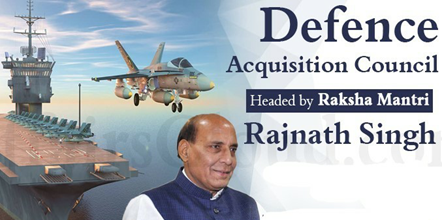
Source:
Defence Acquisition Council gives nod to purchase indigenous defence systems - The Hindu.
Remittances - Edukemy Current Affairs
- Context: The finance minister announced that overseas remittances rose by 12% in 2022.

- Remittances are money or in-kind transfers that migrants send to families back in home communities.
- Remittances are current transfers which means they are one-sided transaction transfers characterized by a resident entity in one nation providing a non-resident entity with an economic value.
- Relevance of Remittances as per the World Bank
-
- They are a vital source of household income for Low and Low Middle-Income Countries (LMICs).
- They alleviate poverty.
- They improve nutritional outcomes, and are associated with increased birth weight and higher school enrollment rates for children in disadvantaged households.
- Studies show that remittances help recipient households to build resilience, for example through financing better housing and to cope with the losses in the aftermath of disasters.
- Data from the RBI Remittances Survey, 2021 shows that the four leading countries in sending remittances to India are the US, the United Arab Emirates (UAE), the UK and Singapore.
Sources:
https://www.worldbank.org/en/news/press-release/2022/11/30/remittances-grow-5-percent-2022
https://economictimes.indiatimes.com/nri/invest/remittances-from-overseas-indians-increased-by-12-pc-to-100-billion-in-2022-nirmala-sitharaman/articleshow/96884006.cms?from=mdr
Very Short-Range Air Defence System (VSHORAD)
- Context: Recently DAC nodded acquisition of VSHORAD missile systems that are being designed by DRDO.
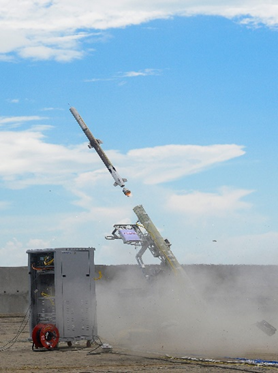
- VSHORADS is a Man Portable Air Defence System (MANPAD) designed and developed indigenously by DRDO’s Research Centre Imarat (RCI), Hyderabad in collaboration with other DRDO laboratories and Indian Industry Partners.
- VSHORADS missile incorporates many novel technologies including miniaturized Reaction Control System (RCS) and integrated avionics.
- The missile is meant for neutralizing low altitude aerial threats at short ranges.
- It is propelled by a dual thrust solid motor.
- The design of the missile including launcher has been highly optimized to ensure easy portability.
- It is a right step to make India “Atmanirbhar” in defence front.
1. It is the highest defence procurement body formed in 2001. 2. It is headed by Defence Ministry. 3. DAC ensures the swift and smooth procurement of the approved requirements of the armed forces in terms of capabilities sought, and within the time frame prescribed by efficiently utilizing the budgetary resources. |
Sources
https://indianexpress.com/article/india/dac-approves-three-acquisition-proposals-indian-army-navy-worth-rs-4276-crore-8373743/
https://pib.gov.in/PressReleasePage.aspx?PRID=1862617#:~:text=VSHORADS%20is%20a%20Man%20Portable,laboratories%20and%20Indian%20Industry%20Partners.
The difficulties in determining age
Context:
In November 2022, the Supreme Court held that one of the accused persons in the gang rape and murder case of an eight-year-old girl in Kathua, who claimed to be a juvenile at the time of the commission of the offence, be tried as an adult.
- The decision was based on the conflicting and unreliable documents submitted by the accused as well as the medical opinion of a team of five doctors, who determined the accused's age to be over 19 years through physical, dental and radiological examination.
Contradictory documents:
The claimed date of birth, which showed the accused to be approximately 15 years and two months old at the time of the commission of the offence, was published in the certificate issued by the local municipal committee.
- However, this came under scrutiny as no such birth had taken place on that date in the hospital, as reported by the claimants’s father.
- Additionally, the secondary school register showed a date of birth which was at variance with the claimed date and by eight months.
- Therefore, despite provisions of the Jammu and Kashmir Juvenile Justice (Care and Protection of Children) Rules, 2014 stating that age could be determined based on school and municipality documents, the court held that these contradictory documents in this case did not inspire confidence regarding the minority status of the delinquent.
Reliance on Medical Opinion:
The court relied upon the medical opinion of a team of five doctors on the basis of physical, dental and radiological examination that the approximate age of the respondent was over 19 years.
- The court also stated that better techniques such as the ‘wisdom teeth’ technique and the ‘epigenetic clock’ technique, which measures DNA methylation levels and has a low margin of error, be introduced in India.
- Though the medical expert’s estimate of age is only an opinion and not a statutory substitute for proof, it assumes importance because the date of birth is not recorded truthfully by all.
Ossification test:
The most popular test for determining age is the ossification test. The extent of ossification (i.e., calcification) and the union of epiphysis in bones, particularly long bones such as radius and ulna, humerus, tibia and fibula, and femur, are helpful in estimating age.
- Though the variations in climatic, dietetic, hereditary and other factors affect the extent of ossification in different regions, a fairly close estimate within a margin of two years (for example, 16-18 years), allowing a margin of error of six months on either side (15.5 years or 18.5 years) may be made from puberty to the consolidation of the skeleton.
Non-registration of Births and its impact on Age determination:
According to the United Nations Children’s Fund report (2016), only 72% of births of children below five years were registered in India. And out of 26 million children born every year, around 10 million went unregistered.
- Though the introduction of better medical techniques to estimate age is welcome, it would be better if every birth is registered on the basis of hospital or any other proof so that its credibility is maintained in the court of law.
- Ultimately, a statement of fact (about the date of birth) has more evidentiary value than the estimated age based on medical opinion, which may falter at times.
Conclusion:
The legal rights and protection of minors and adults differs greatly and determining the age of individuals have become crucial in the context of immigration and asylum, In this particular case of rape and murder, the Supreme court had to rely on medical opinion, despite contradictory documents and non-availability of credible birth certificates. It highlights the difficulties in determining age and the subjectivity and uncertainty.
World Spice Congress (WSC) - Edukemy Current Affairs
Context: 14th Edition of the World Spice Congress (WSC) will be held in Mumbai in February 2023.
- WSC 2023 is organized on the side lines of the prestigious G20 Presidency of India.
- India is known as the ‘Spice Bowl’ of the world.
Aim of WSC 2023: To open up newer opportunities to promote international trade of Indian spices.
About World Spice Congress:
- World Spice Congress (WSC) is the conglomeration of the global spice industry.
- It is organized under the leadership of Spices Board, Ministry of Commerce and Industry, Government of India with support from various trade and export forums.
- Since its inception in 1990, the WSC has seen 13 successful iterations over the previous three decades.
|
Spices Board of India ● The Spices Board of India is a regulatory and export promotion body for Indian spices. ● It was set up in 1987 under the Spices Board Act, 1986. ● It is headquartered in Kochi, Kerala. |
Source: PIB
National Youth Festival - Edukemy Current Affairs
Context: 26th National Youth Festival is being held in Hubbali, Karnataka from 12th to 16th January.
Theme: “Viksit Yuva - Viksit Bharat”.
Key points:
- The programme is being held on National Youth Day.
- The National Youth Day is celebrated on the birth anniversary of Swami Vivekanand, to honour and cherish his ideals, teachings and contributions.
- The National Youth Festival is held every year to provide exposure to our talented youth at the national level, along with galvanising them towards nation building.
Source: PIB.
Prithvi-II Missile - Edukemy Current Affairs
Context: A successful training launch of a Short-Range Ballistic Missile, Prithvi-II was carried out from the Integrated Test Range, Chandipur off the coast of Odisha.
- A well-established system, Prithvi-II missile, has been an integral part of India’s nuclear deterrence.
Key facts about Prithvi-II:
- The missile is powered by light propulsion twin engines.
- It has a range of around 350 km and can carry 500-1,000 kg of warheads.
- It uses an advanced inertial navigation system to strike the set target.
- Prithvi was developed by the DRDO under the Integrated Guided Missile Development Programme.
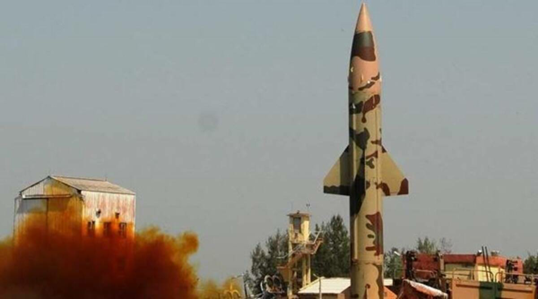
Source: PIB.
Digital Communication Commission
Context: The government is planning to dismantle the Digital Communications Commission (DCC), in a bid to increase efficiencies and speed up decision making.
- Currently, DCC is the highest decision-making body of Department of Telecommunications (DoT).
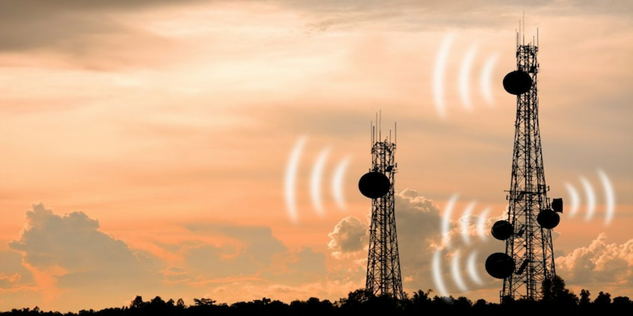
Reason behind this move:
- The inter-ministerial panel, chaired by the telecom secretary, takes decisions around most of the telecom matters.
- The need for DCC is increasingly becoming redundant as most of the critical matters are taken to Cabinet for approval.
- The intent is to remove duplication and fasten the process approval.
|
About the DCC:
|
Source:
digital communication commission: Govt likely to dismantle Digital Communications Commission: Sources - The Economic Times (indiatimes.com)
Hawaii’s Kilauea volcano - Edukemy Current Affairs
Context: One of the world's most active volcanoes has erupted again in Hawaii, nearly one month after it stopped releasing lava.
- lava from Kilauea was flooding much of the Halema'uma'u crater at the volcano's summit, while clouding the skies with volcanic smog.
About the Kilauea volcano:
- Kilauea, also called Mount Kilauea, the world’s most active volcanic mass, located on the southeastern part of the island of Hawaii, U.S.
- The central feature of Hawaii Volcanoes National Park, Kilauea is an elongated dome built of lava eruptions from a central crater and from lines of craters extending along east and southwest rifts, or fissures.
- The volcano’s 1,250-metre summit has collapsed to form a caldera.
- Kilauea’s slopes merge with those of the nearby volcano Mauna Loa on the west and north.
Source:
Hawaii: Footage shows Kilauea volcano erupting again - BBC News
Ondriya Arasu - Edukemy Current Affairs
Context: Tamil Nadu Governor R.N. Ravi, recently, has disapproved of the ruling DMK’s use of the Tamil term “ondirya arasu” to denote the Union government.
- The word “ondriyam” referred to a sub-district, sub-divisional level structure in the hierarchy and was used for the Union government.
- Since coming to power, the present DMK government in Tamil Nadu began using “ondriya arasu” in all its communications.
- Governor ravi said, the term “ondirya arasu” is perhaps with an intention to “belittle” and be “disrespectful” to the Union government.
Source:
Tamil Nadu Governor R.N. Ravi opposes use of Tamil term ‘ondirya arasu’ for Union government - The Hindu
Multiple dimensions of risks and accidents on Indian roads
Context:
The various aspects of hazards and accidents on Indian roads are highlighted by recent traffic accidents in Delhi, Uttarakhand, and Tamil Nadu.
- 5 lakh people died as a result of one-third of the 4. 1 lakh road accidents that were recorded in 2021. In another third of the collisions, there were serious injuries.
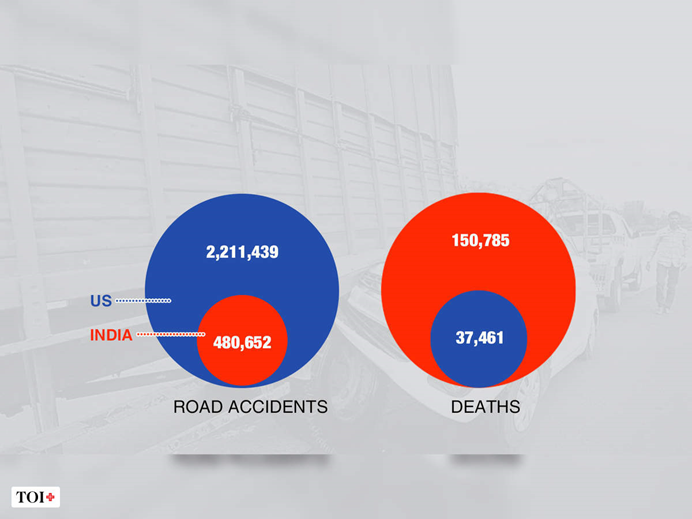
What actions are necessary to lower accidents on Indian roads?
Additional duty: Organizations like NHAI and state public works departments should be given the obligation of maintaining not only major highways but also subpar conditions such as potholes, inadequate signage, and poorly constructed roads.
Encourage Samaritan efforts: The government should provide incentives for people to quickly transport patients to hospitals and pay hospitals for emergency trauma care.
Implementing electronic monitoring: The 2019 amendments to the Motor Vehicles Act gave state governments the authority to monitor roads electronically using tools including speed cameras, CCTV cameras, speed guns, body worn cameras, and more. investing in such technology.
Share the article
Get Latest Updates on Offers, Event dates, and free Mentorship sessions.

Get in touch with our Expert Academic Counsellors 👋
FAQs
UPSC Daily Current Affairs focuses on learning current events on a daily basis. An aspirant needs to study regular and updated information about current events, news, and relevant topics that are important for UPSC aspirants. It covers national and international affairs, government policies, socio-economic issues, science and technology advancements, and more.
UPSC Daily Current Affairs provides aspirants with a concise and comprehensive overview of the latest happenings and developments across various fields. It helps aspirants stay updated with current affairs and provides them with valuable insights and analysis, which are essential for answering questions in the UPSC examinations. It enhances their knowledge, analytical skills, and ability to connect current affairs with the UPSC syllabus.
UPSC Daily Current Affairs covers a wide range of topics, including politics, economics, science and technology, environment, social issues, governance, international relations, and more. It offers news summaries, in-depth analyses, editorials, opinion pieces, and relevant study materials. It also provides practice questions and quizzes to help aspirants test their understanding of current affairs.
Edukemy's UPSC Daily Current Affairs can be accessed through:
- UPSC Daily Current Affairs can be accessed through Current Affairs tab at the top of the Main Page of Edukemy.
- Edukemy Mobile app: The Daily Current Affairs can also be access through Edukemy Mobile App.
- Social media: Follow Edukemy’s official social media accounts or pages that provide UPSC Daily Current Affairs updates, including Facebook, Twitter, or Telegram channels.





